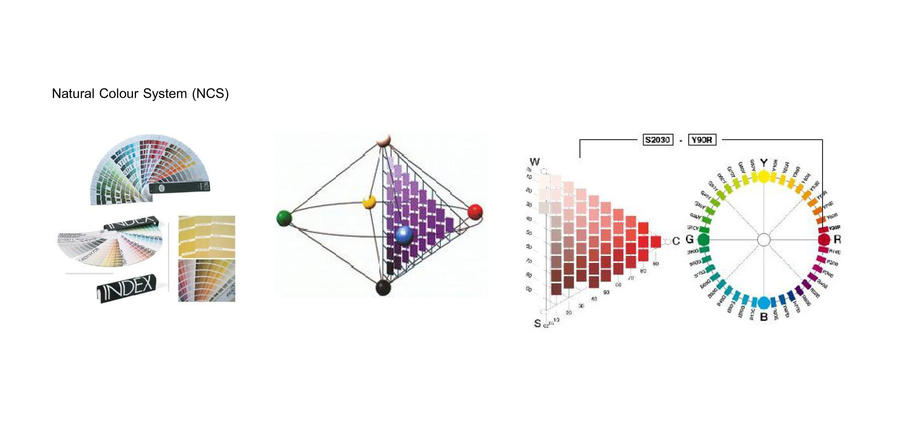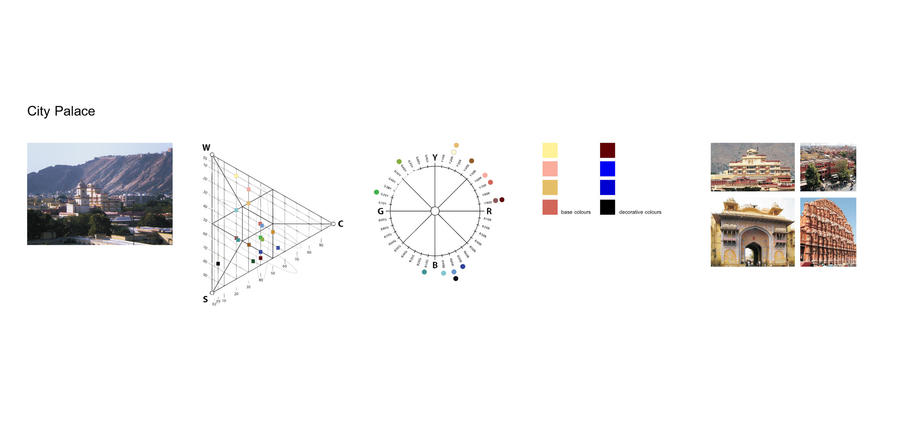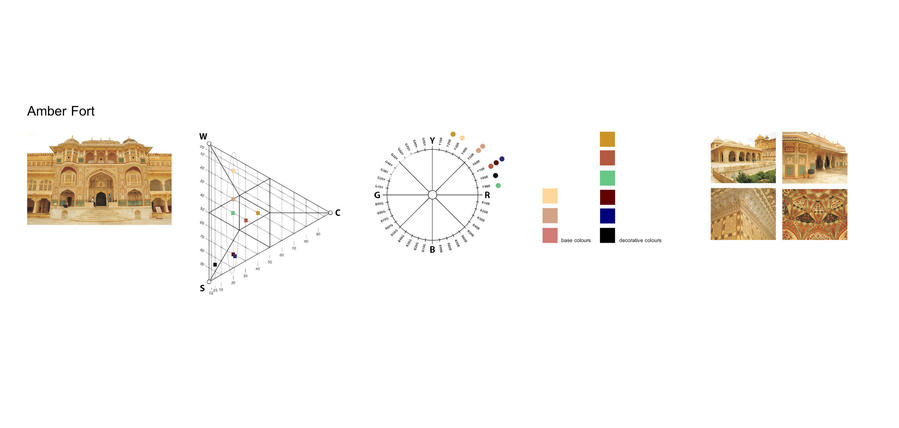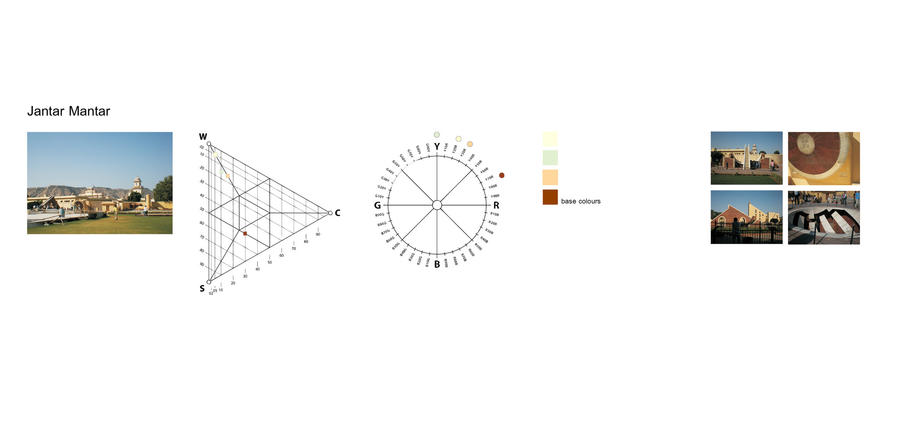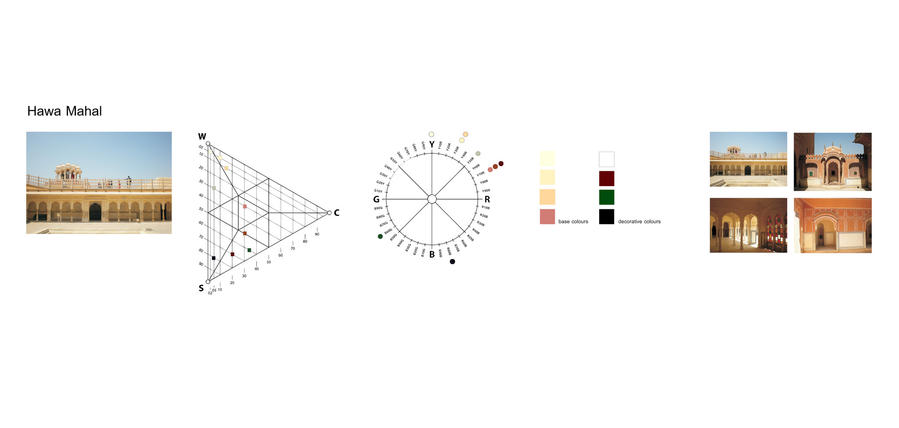In these series of articles, Melissa compiles the research of student theses at CEPT University, to look at the explorations and innovations in material usage and construction/ craft by various communities of the indian diaspora.
note: all images by research author unless otherwise mentioned
Bamboo explorations
This thesis is an experimental exploration that takes the propagative potential of bamboo as a construction material seriously,as it is a rapidly renewable resource that is easily workable.Today,Split bamboo sections could find answers to many of bamboo’s problems as an industrialized material—it’s non-standardized form and limited forms.A split bamboo section offers more potential for form variation, and different ways of conceiving the structural use of bamboo altogether. Many forms of split bamboo use already exist in rural communities, in vernacular construction. But they have not been studied as a potential for contemporary, industrialized construction.
Research authors: Brinda Sonpal, Prof. Sankalpa
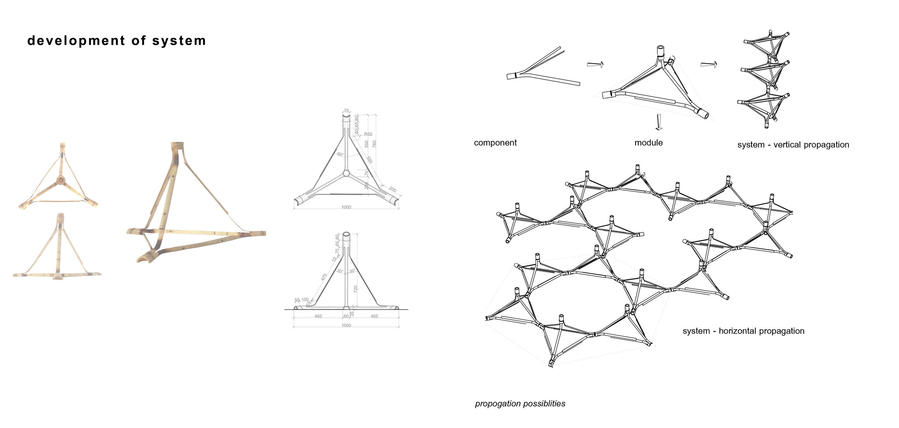
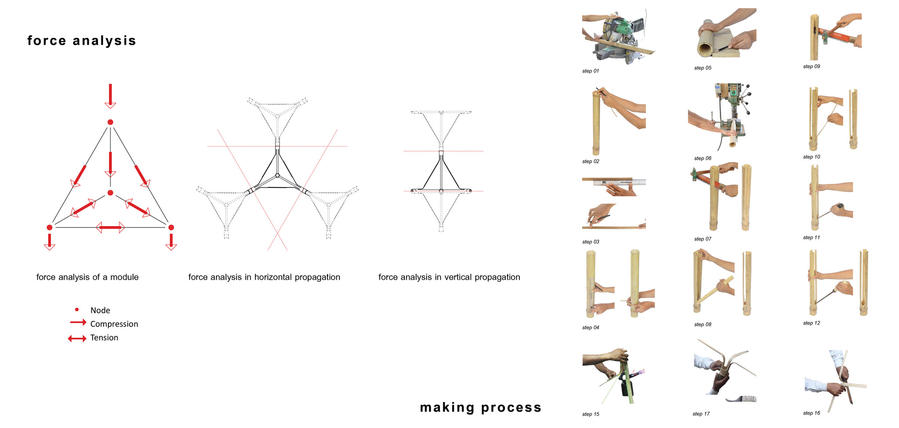
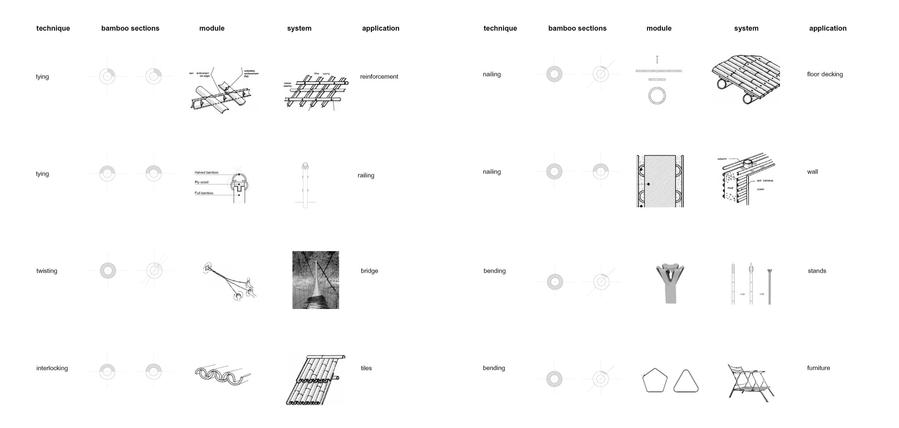
Bombay Blackwood
The Bombay blackwood sofa, an early colonial amalgam of British form and Indian surface,demonstrates the clarity with which two divergent ideas about furniture might be brought together.By borrowing its form and structure from British styles, and its surface ornamentation and finish from local Gujrati lore, the piece manages to become a cross-cultural product,while keeping itscultural parents completely distinct.
Research authors: Divya Jain, Dr.Abigail McGowan (guide)
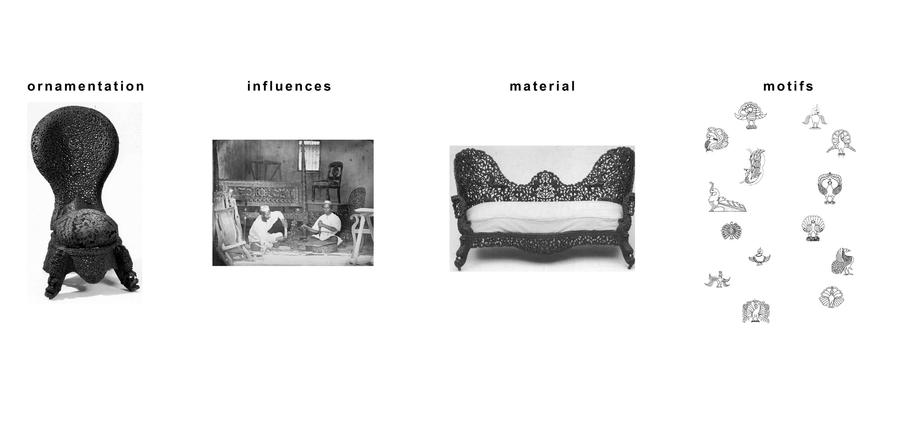
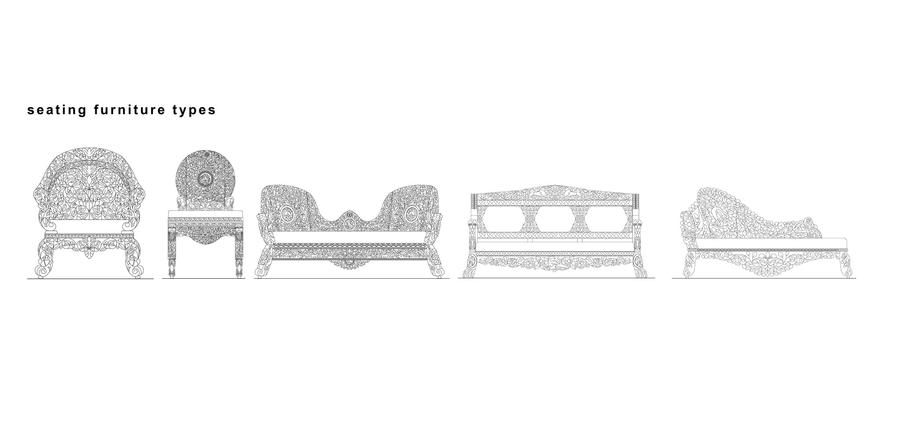
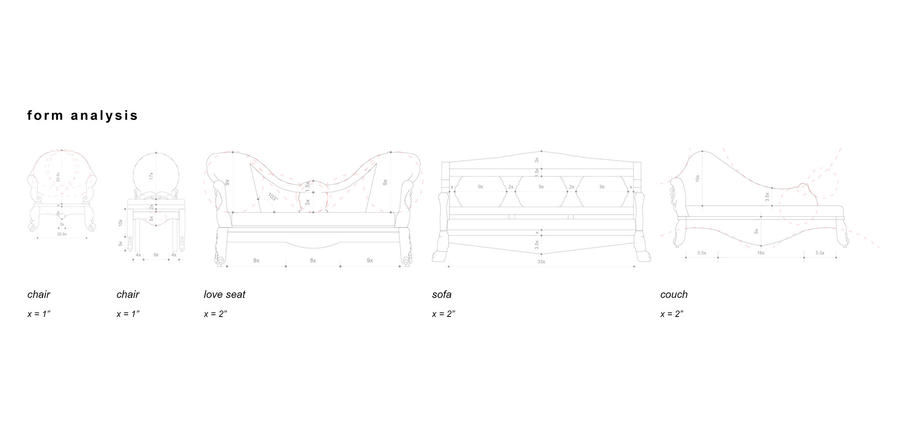
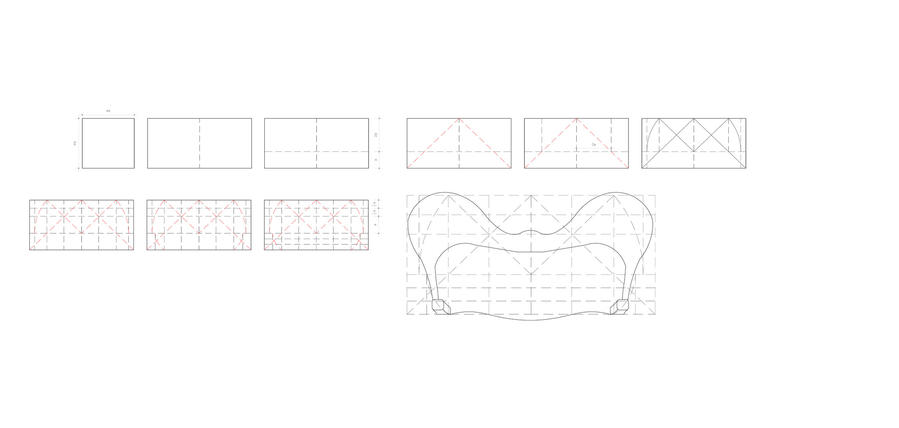
Bohra cabinets of Siddhpur
This project uses the inbuilt wall cabinet as a means to demonstrate the inherently cross-cultural nature of Bohra furnishings, and to explore the factors that led to the emergence of the elaborate cabinet units, the craft involved in creating them, and the origin and evolution of their ornamentation and its expression.
Research authors : Mitraja Vyas, Jay Thakkar (guide)
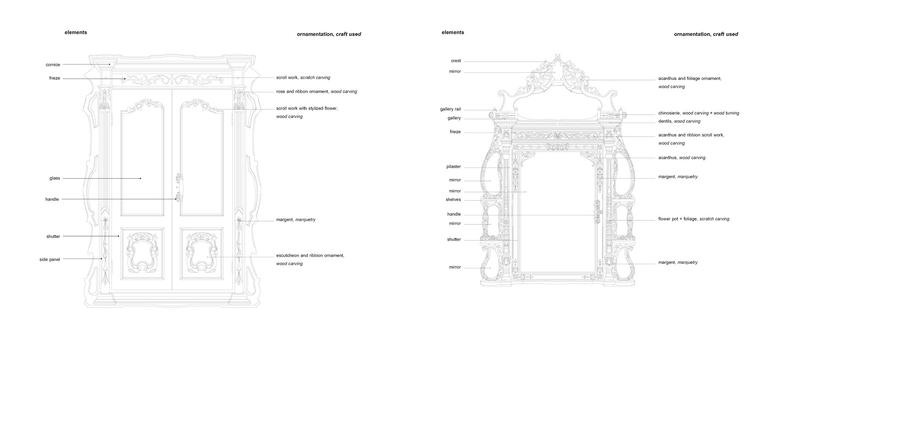
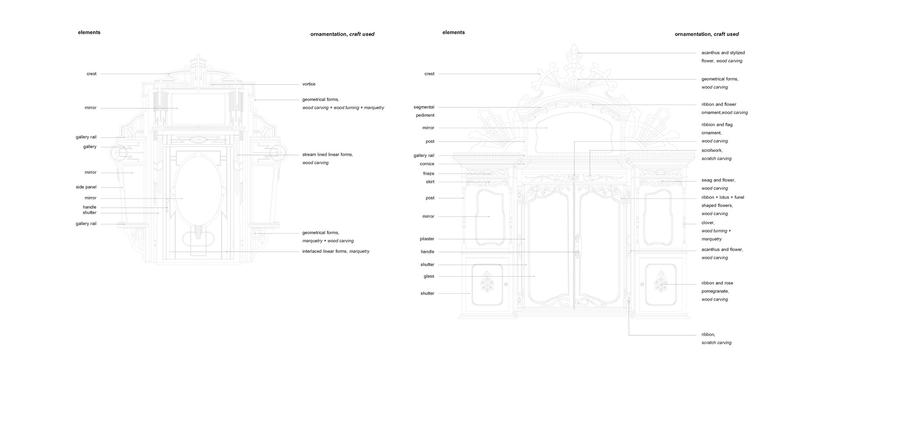
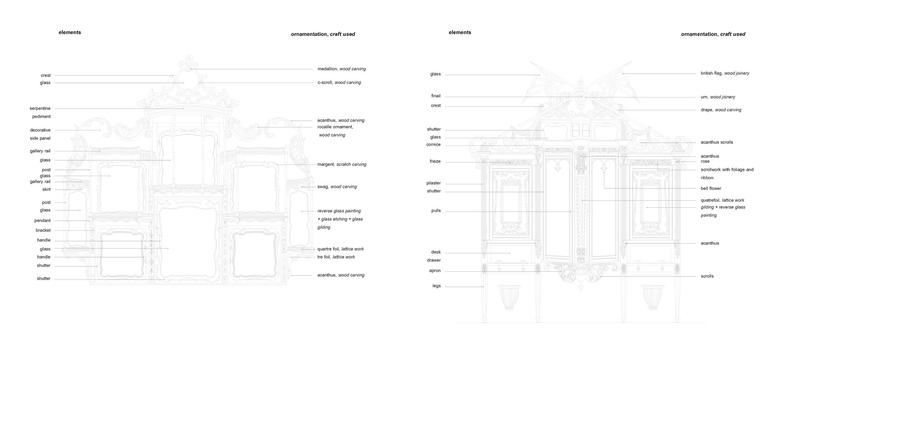
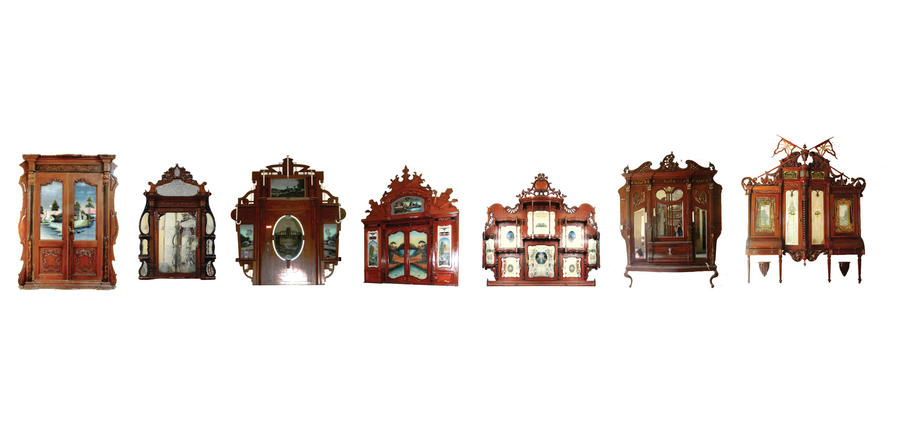
Alien furniture integration in Kerala interiors
Historically, the Kerala region, like much of the Indian subcontinent, showed few traces of movable furniture in domestic settings. The introduction, and subsequent integration of separate ‘loose’ furniture pieces into the domestic Kerala setting is believed to be the result of foreign influence and cross-cultural interaction.This thesis sets out to examine the underlying factors that led to the integration of movable furniture in domestic interiors in Kerala through the study of a series of selected furniture pieces, understood through the context of pre- and post-colonial built form in Kerala.
Research authors : Varsha M.B, C.S. Susanth (guide)
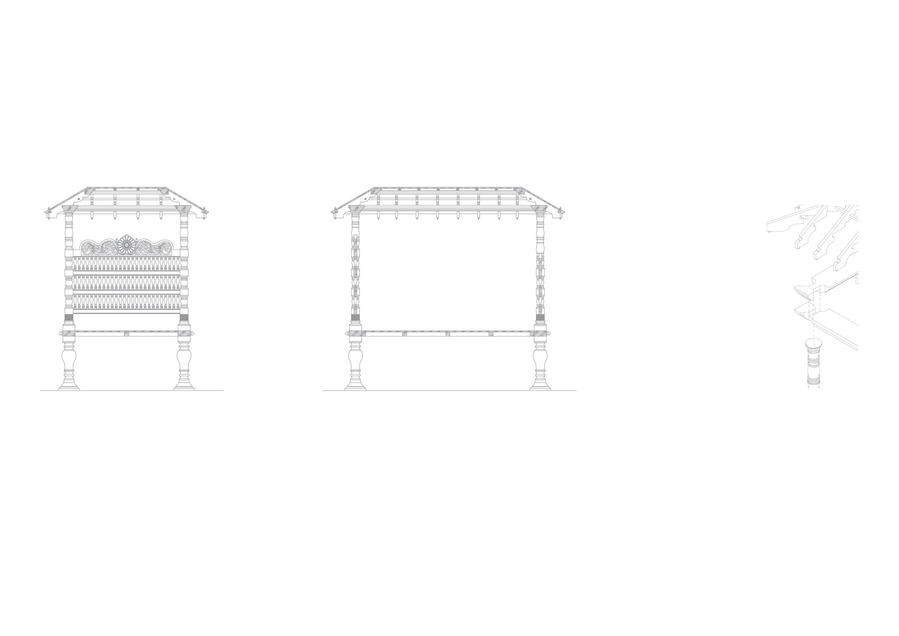
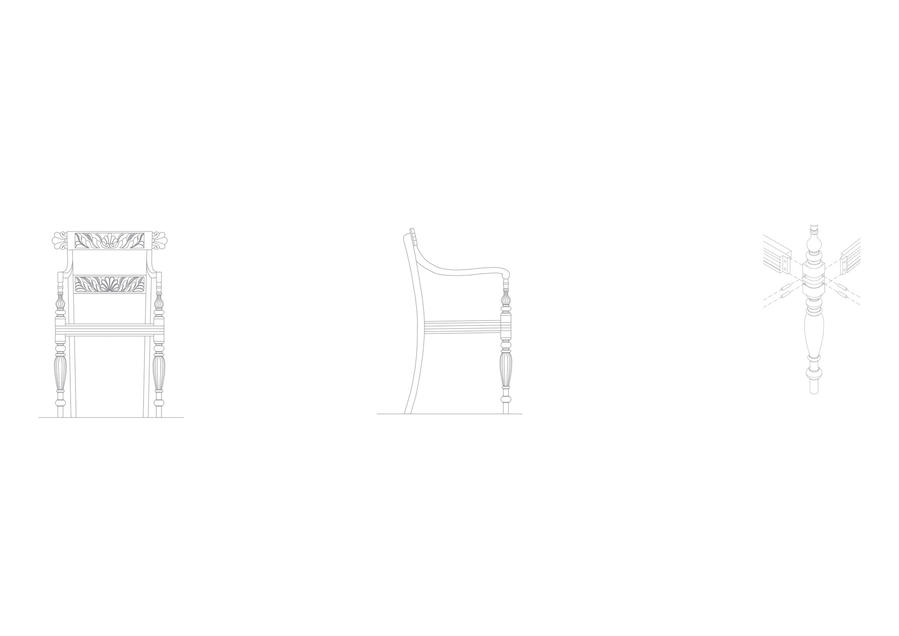
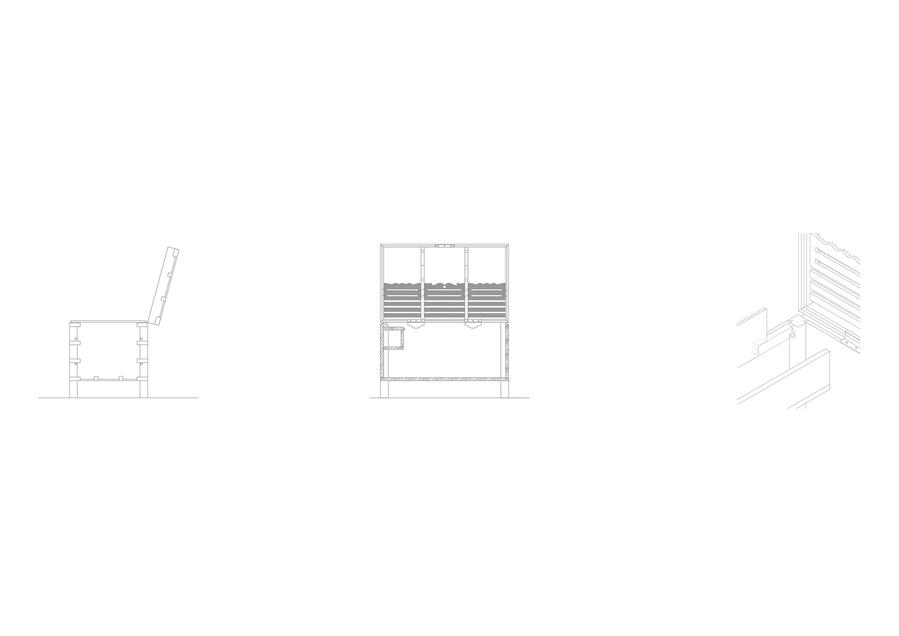
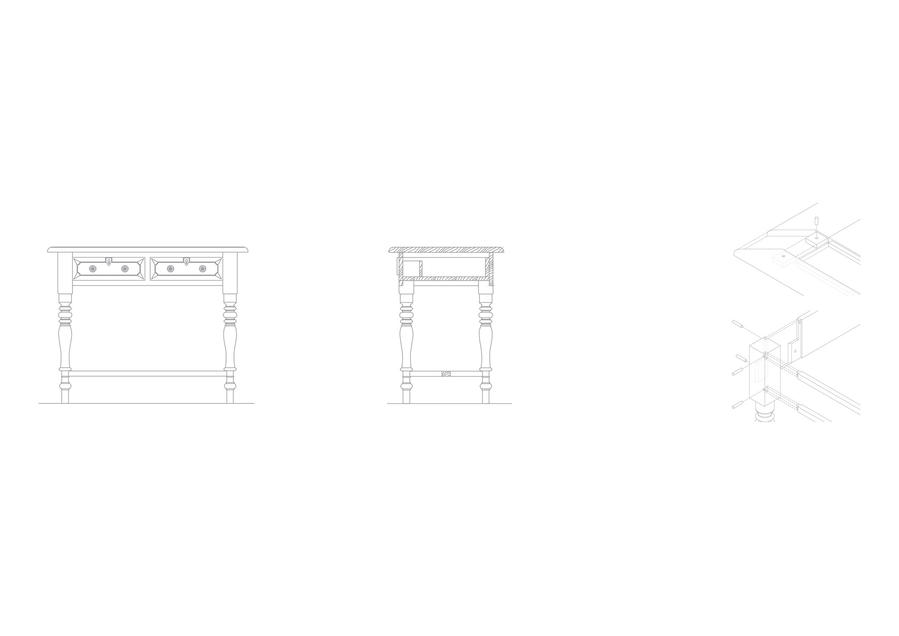
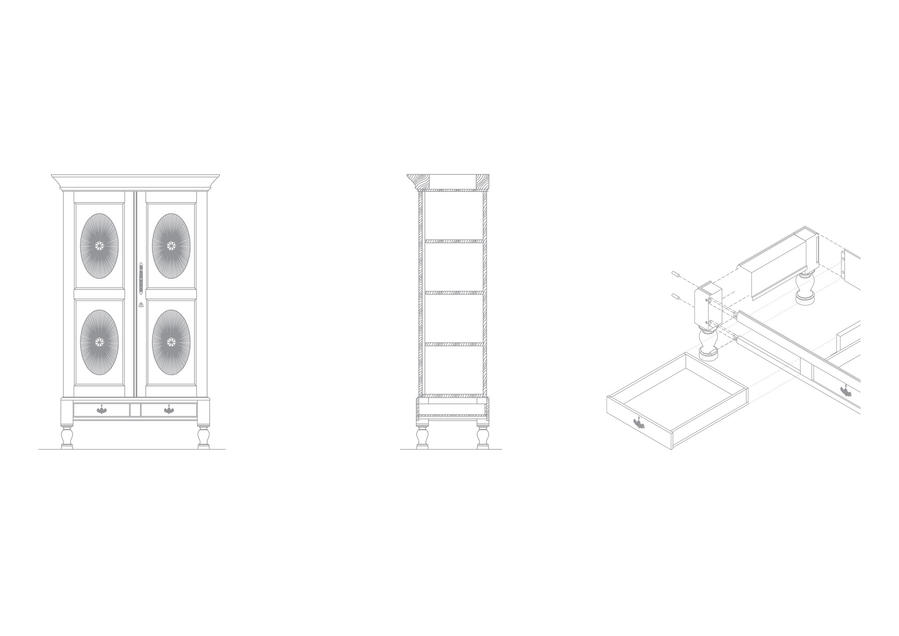
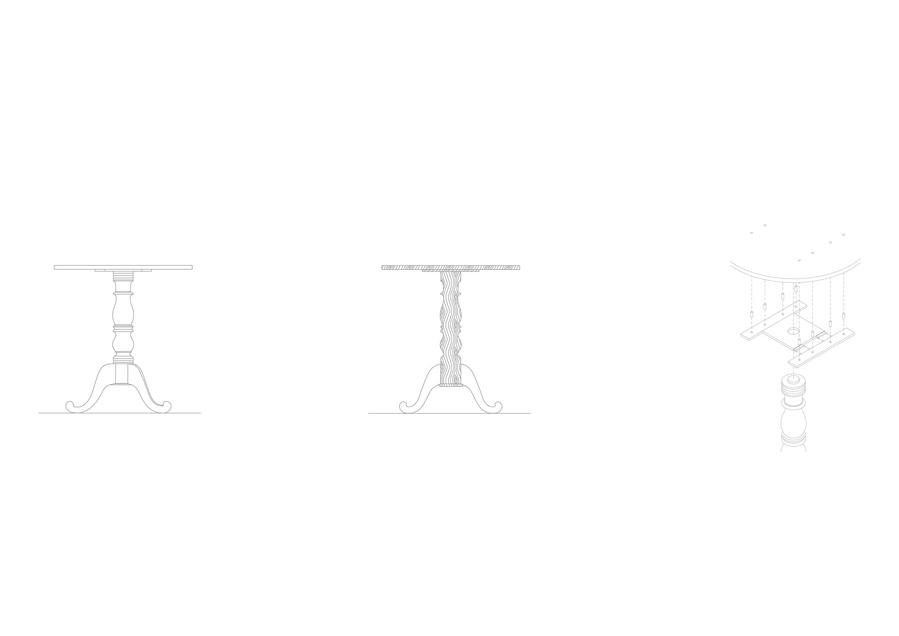
Ornamentation in traditional wooden houses of travancore
Kerala’s unique architectural identity results from a combination of culturally specific ritual practices adopted in its architecture, highly developed local craft methods, and from a material and formal expression that responds to the climate and geography of the region. Ornamentation in the houses of Kerala , subordinate to the structure, manifested the material expression of the construction.This project examines the nuanced relationship between ornament and structure, through the elements of the constructed Travancore house, and reflects upon the changing role that these pieces, and the diminishing knowledge of their context, have withstood over time.
Research authors : Chandra Prabha Radhakrishnan, Ramaswamy Iyer (guide)
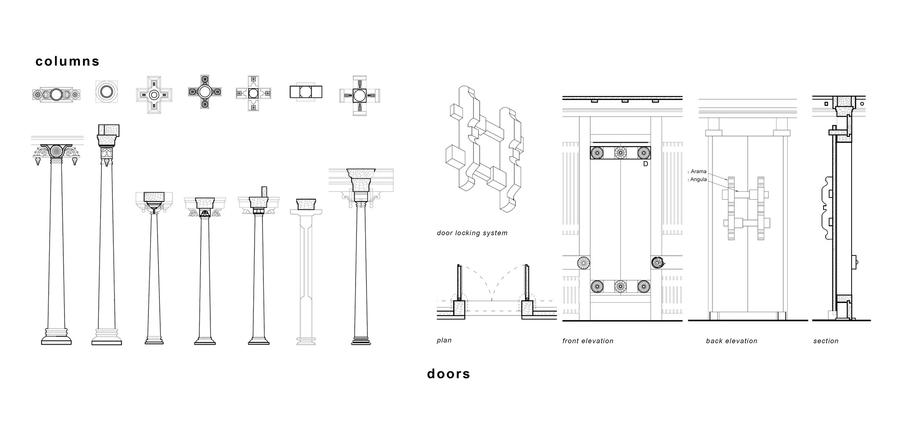
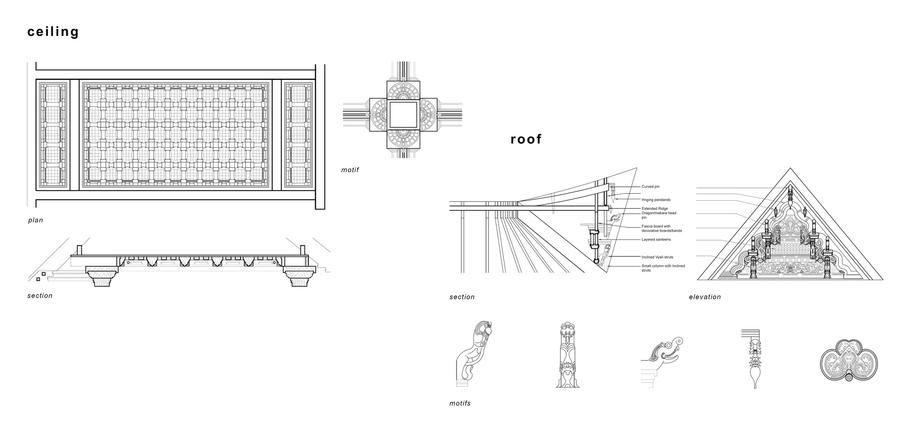
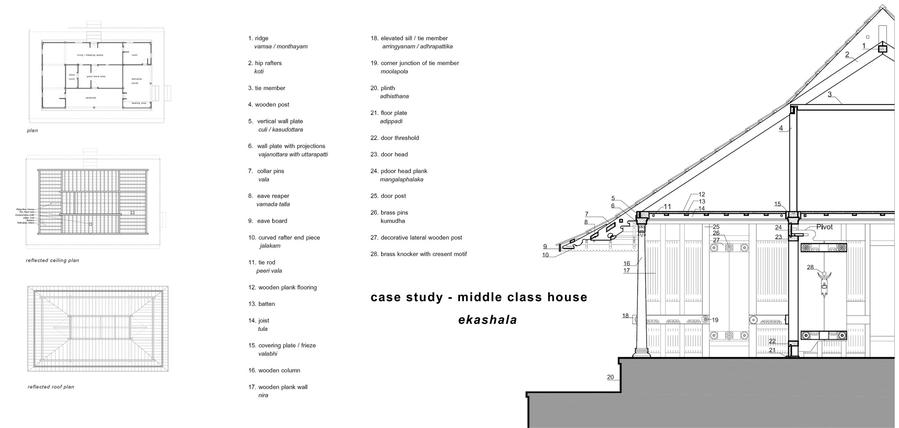
Generative systems - Indian temple architecture
Generative design,which is older than parametrics, is a system wherein rather than specifying the design, one instead specifies the design process, through a series of rules or constraints that guide formation of the end product, which can be any number of alternatives.It is an old approach, found developed to a sophisticated extent in ancient indian temples.Rather than attempt to grapple with the new valuation systems required for an open-ended design process, this project looks to the past to develop an understanding of an ancient practice that can inform the engagement with a very contemporary one. This project examines the spatial dimensioning systems of Shiva temples in the Chalukyan period as a means to deconstruct a generative, ruled based process of arriving at a design form, and compares this with a digital, parametric approach to the design of the same form.
Research authors :U.P Chandini, Prof. Nithin Raje (guide)
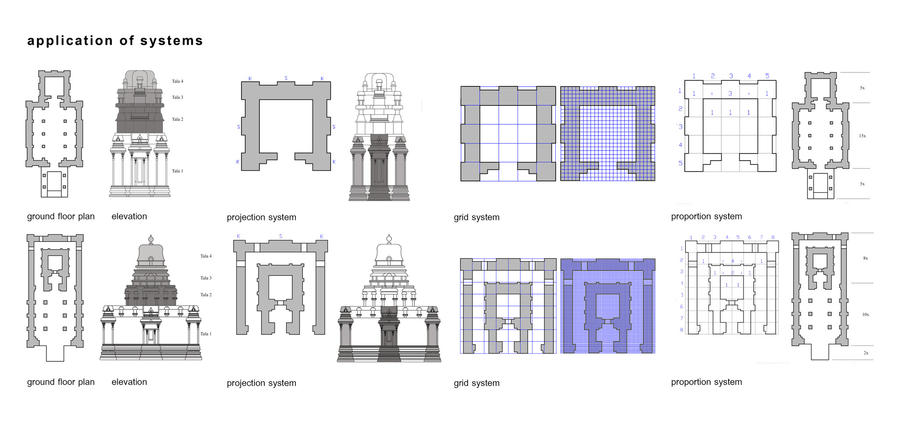
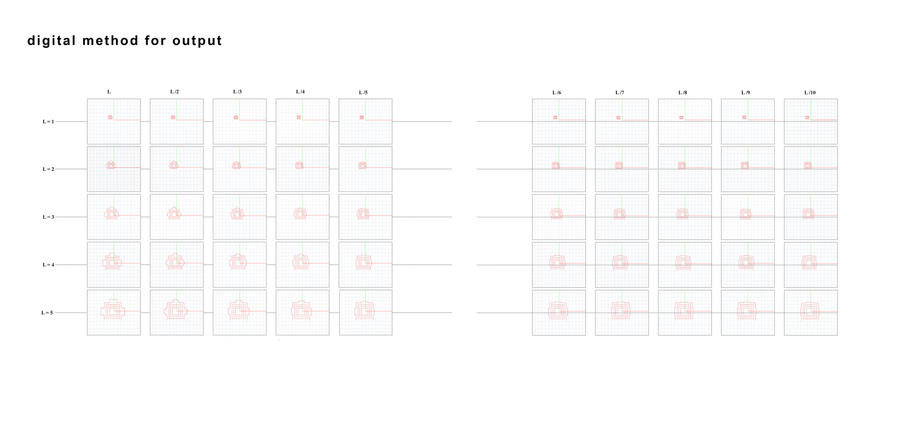
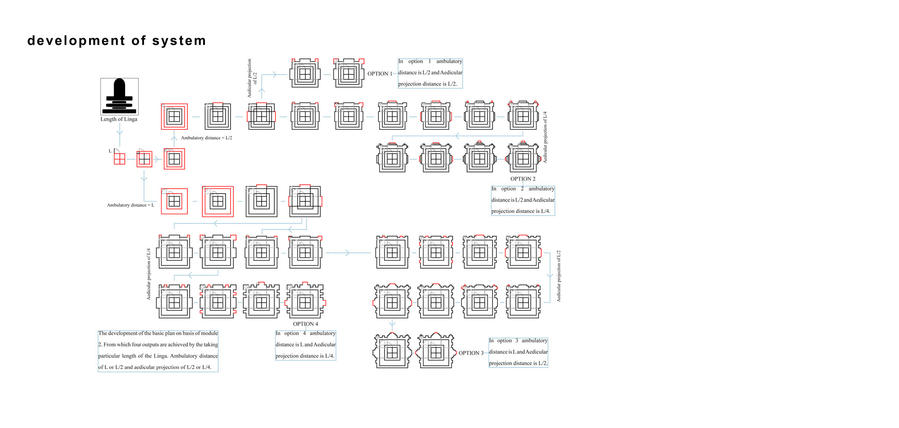
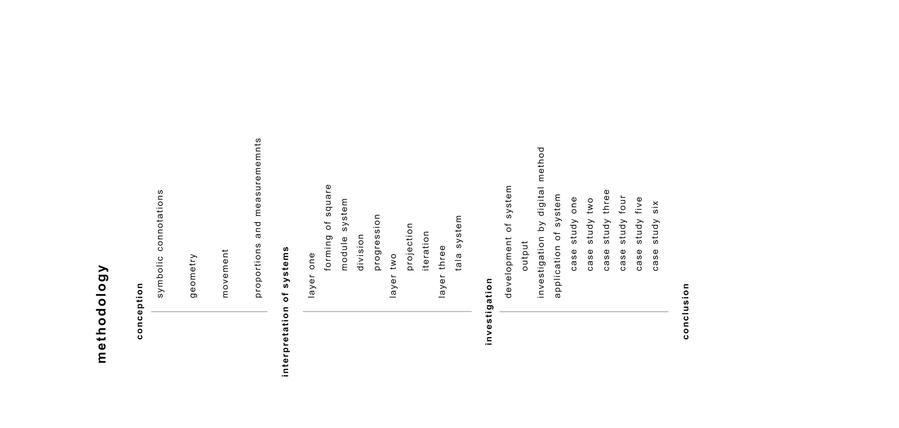
Colour and form: local production of palaces in Jaipur
Through a detailed analysis of the colour combinations present in the major palaces of the city Jaipur, this study demonstrates that colour is as important as form in the creation of nuanced spaces.The colours present in Jaipur palaces represent the availability of various pigment sources in the region, and at the same time exemplify the vast quantum of possibility that these colours, when used in clever combination with a system of formal elements, can create.
Research authors :Saili sonar, Latika Khosla (guide)
